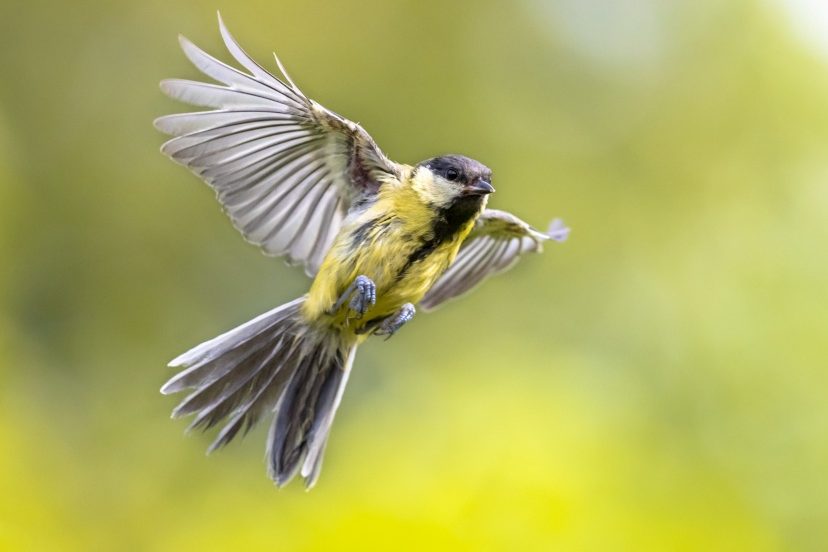Bird Camera: Capturing Nature’s Beauty Up Close
As an avid bird watcher and nature enthusiast, I have found that a bird camera offers an incredible opportunity to observe and document the fascinating world of birds right from the comfort of my own home. In this article, I will share with you the importance of bird cameras, factors to consider when choosing one, types of cameras available, best placement strategies, essential features to look for, and tips for maximizing their effectiveness.
Introduction
Bird cameras, also known as birdhouse cameras or birdwatching cameras, are specially designed devices that allow you to capture high-quality images and videos of birds in their natural habitats. These cameras offer a unique perspective and a closer look at the behaviors, nesting habits, and beauty of various bird species. Whether you’re a seasoned birdwatcher or just starting out, having a bird camera can significantly enhance your birdwatching experience.
<< see range and prices of birdhouse cameras CLICK HERE >>
Importance of Bird Cameras
Bird cameras play a crucial role in birdwatching and conservation efforts. Here’s why they are important:
In-Depth Observation
Cameras provide an intimate view of birds’ lives that would be otherwise difficult to witness. They allow you to observe their feeding patterns, courtship rituals, nest-building activities, and even the hatching of eggs. This level of insight can contribute to our understanding of bird behavior and contribute to scientific research.
Education and Awareness
Cameras offer a unique educational opportunity for people of all ages. By capturing captivating footage of birds in their natural environment, these cameras can foster a deeper appreciation for nature and wildlife. They can also be used in educational settings, such as schools or nature centers, to teach students about different bird species and their habitats.
Conservation Efforts
By documenting bird behavior and population trends, bird cameras can aid in conservation efforts. Researchers and conservationists can use the footage captured by these cameras to monitor bird populations, identify threats, and develop conservation strategies to protect vulnerable species and their habitats.
Factors to Consider in a Bird Camera
Selecting the right bird camera is crucial to ensure optimal performance and a rewarding birdwatching experience. Consider the following factors before making your purchase:
Types of Bird Cameras
There are different types of bird cameras available, including nest box cameras, trail cameras, and wireless cameras. Each type has its own advantages and limitations, so choose one that aligns with your specific needs and preferences.
Best Placement for Bird Cameras
Proper camera placement is essential to capture the desired bird activity. Consider the area you want to monitor, such as a bird feeder, or birdhouse, or natural nesting site. And choose a camera that can be easily installed and positioned for optimal coverage.
Essential Features of Bird Cameras
Several key features enhance the performance and usability of bird cameras. Look for the following features:
Weatherproofing and Durability
Bird cameras need to withstand outdoor conditions, including rain, wind, and temperature fluctuations. Ensure that the camera you choose is weatherproof and made of durable materials.
Night Vision Capability
Some bird species are more active during dawn, dusk, or nighttime. A camera with night vision capability allows you to capture clear footage even in low-light conditions.
Wireless Connectivity and Mobile Access
Wireless bird cameras enable remote monitoring through your smartphone, tablet, or computer. Look for cameras that offer Wi-Fi connectivity and compatible mobile apps for easy access to live feeds and recordings.
Image and Video Quality
Opt for a bird camera with high-resolution image and video capabilities to capture detailed and sharp footage. Higher resolution ensures that you can appreciate the intricate details of the birds’ feathers and behaviors.
Power Source
Consider the power source options for your bird camera. Some cameras operate on batteries, while others require a constant power supply. Choose one that suits your preferences and installation location.
Monitoring and Recording Options
Check if the camera allows for continuous recording or if it has motion-activated recording features. Additionally, consider the storage options available, such as SD cards or cloud storage, to ensure you can store and review the captured footage conveniently.
Types of Bird Cameras
When it comes to bird cameras, there are several types to choose from. Let’s explore the most common types:
Nest Box Cameras
Nest box cameras are specifically designed to be placed inside birdhouses or nesting boxes. These cameras provide an incredible glimpse into the lives of nesting birds, allowing you to observe the entire nesting process from egg-laying to fledging.
Trail Cameras
Trail cameras, also known as wildlife cameras, are versatile devices that can be used for birdwatching as well. They are typically mounted on trees or posts near feeding areas, bird baths, or bird feeders. Trail cameras are motion-activated and capture both images and videos whenever they detect movement.
Wireless Cameras
Wireless bird cameras offer the convenience of remote monitoring. They connect to your home’s Wi-Fi network, allowing you to access the live video feed and recordings from your smartphone or computer. Wireless cameras are often compact and discreet, making them suitable for various birdwatching setups.
<< see range and prices of birdhouse cameras CLICK HERE >>
Best Placement for Bird Cameras
To maximize the effectiveness of your bird camera, proper placement is essential. Here are some suggested placements:
Bird Feeders
Placing a bird camera near bird feeders can capture the daily comings and goings of different bird species as they visit the feeders for food. This provides an opportunity to observe their feeding behaviors, interactions, and the variety of birds that visit your feeders.
Bird Baths
Bird baths are popular spots for birds to quench their thirst and bathe. Positioning a camera near a bird bath allows you to capture charming moments of birds splashing and preening, offering unique insights into their grooming habits.
Nesting Sites
If you have nesting boxes or natural nesting sites in your yard, placing a bird camera inside or near these locations allows you to witness the entire nesting process. From nest-building to egg-laying and the hatching of chicks, you can document the fascinating journey of bird parenthood.
Natural Habitats
For a more immersive birdwatching experience, consider placing a camera in a tree or on a post near a natural habitat, such as a forested area or a garden with dense vegetation. This provides a glimpse into the lives of birds in their natural environment, capturing their interactions with other wildlife and their behaviors in a broader ecological context.
Essential Features of Bird Cameras
When choosing a bird camera, certain features are essential to ensure optimal performance and a fulfilling birdwatching experience. Consider the following features:
Weatherproofing and Durability
Cameras need to withstand outdoor conditions, including rain, wind, and temperature fluctuations. Ensure that the camera you choose is weatherproof and made of durable materials that can withstand the elements.
Night Vision Capability
Birds are not only active during daylight hours. Many species are active during dawn, dusk, and even at night. Therefor a camera with night vision capability allows you to observe and record their activities during these low-light conditions.
Wireless Connectivity and Mobile Access
Wireless cameras offer the convenience of remote monitoring through your smartphone, tablet, or computer. Look for cameras that offer Wi-Fi connectivity and compatible mobile apps that allow you to access live feeds and recordings from anywhere.
Image and Video Quality
A high-resolution camera ensures that you capture detailed and clear images and videos of the birds. Look for cameras with at least 1080p resolution for crisp and vibrant footage.
Power Source
Consider the power source options for your bird camera. Some cameras operate on batteries, providing flexibility in placement. Others require a constant power supply. Choose one that suits your preferences and installation location.
Monitoring and Recording Options
Check if the camera allows for continuous recording or if it has motion-activated recording features. Additionally, consider the storage options available, such as SD cards or cloud storage, to ensure you can store and review the captured footage conveniently.
<< see range and prices of birdhouse cameras CLICK HERE >>
Tips for Maximizing the Effectiveness of Bird Cameras
To make the most out of your bird camera experience, follow these tips:
Position the Camera Correctly
Experiment with different camera angles and positions to find the best view of the bird activity you want to capture. Ensure that the camera is stable and secure in its placement to avoid vibrations or movement.
Provide Adequate Food and Water Sources
Attract a wide variety of bird species to your camera’s view by providing ample food and water sources in your yard. Bird feeders, bird baths, and native plants that produce berries or seeds are excellent ways to entice birds to visit your camera’s location.
Create a Welcoming Environment
You can enhance the appeal of your camera setup by adding natural elements such as perches, branches, or birdhouses near the camera’s field of view. These additions provide birds with resting spots and potential nesting sites, increasing the likelihood of capturing interesting behaviors.
Regularly Check and Maintain the Camera
Cameras require regular maintenance to ensure optimal performance. Clean the lens regularly to remove dirt or water spots that may obstruct the view. Check the camera’s power source and storage capacity to ensure uninterrupted operation.
Share and Document Your Findings
Share your fascinating bird camera discoveries with fellow bird enthusiasts or online communities dedicated to birdwatching. Document the species you observe, their behaviors, and any interesting interactions you capture. Your findings can contribute to citizen science initiatives and expand our knowledge of bird populations.
Conclusion
Bird cameras provide a unique window into the captivating world of birds. From observing their daily routines to documenting the intricacies of their behaviors, these cameras offer an immersive and educational birdwatching experience. By considering factors like camera type, placement, essential features, and tips for maximizing effectiveness, you can choose the perfect camera to capture nature’s beauty up close. See also my articles on birdhouse cameras.
<< see range and prices of birdhouse cameras CLICK HERE >>
Bird Camera FAQs
1. Can bird cameras be used indoors?
Yes, cameras can be used indoors as well, particularly if you have pet birds or want to monitor bird nests inside your home, for example. Choose a camera that suits indoor environments and provides the necessary features for capturing clear footage.
2. How far can bird cameras capture footage?
The capture distance of cameras varies depending on the camera’s lens and specifications. Some cameras can capture footage from a few meters away, while others have zoom capabilities that allow for longer distances. Check the camera’s specifications for its capture range.
3. Are bird cameras difficult to set up?
Most cameras are designed to be user-friendly and easy to set up. They often come with detailed instructions and mounting accessories. However, the complexity of setup can vary depending on the camera type and your specific installation requirements.
4. Can bird cameras be used for other wildlife monitoring?
Yes, cameras can be used to monitor other wildlife as well. Trail cameras, in particular, are versatile devices that can capture images and videos of various wildlife species, such as squirrels, rabbits, or deer.
5. Can I watch the live feed from my bird camera on multiple devices?
Yes, if your bird camera offers wireless connectivity and has a compatible mobile app, then you can watch the live feed from multiple devices simultaneously. This allows you to share the experience with family members or fellow bird enthusiasts.
If you are new to photography, discover the photography basics here.
Further reading
See Birdhouse Camera: A Birdwatching Adventure
Also wildlife photography




